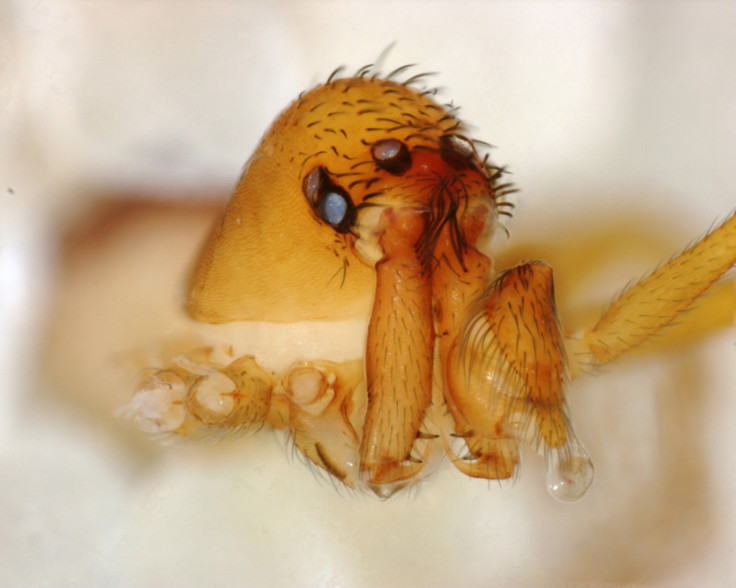Super-fast 'trap-jaw spiders' striking prey captured for the first time on video

"Trap-jaw spiders" are incredibly fast in catching their preys, striking them at lightning speed, scientists have found. Scientifically known as Mecysmaucheniidae spiders, these arachnids often look harmless to the unsuspecting eye, but they are actually formidable predators.
The study, published in the journal Current Biology, uses high-speed camera to track the spider's powerful strikes, and DNA analysis to study the diversity within this family of spiders.Trap-jaw spiders display an unusual frontal region; they have a highly manoeuvrable jaw-like mouths known as "chelicerae" and elongated heads.
"I started working on this group because of its strange morphology, I wanted to understand why it had evolved in such way. These spiders looked strange, so I wanted to understand what was going on with them," lead author Hannah Woods told IBTimes UK.
The spider's peculiar anatomy and the orientation of its head muscles allows it to use its chelicerae as a "mouse-trap". The arachnids catch their preys by opening it wide and snapping it shut once the prey is close enough. The study focused in part on that process, to understand how fast it was.
Super-fast spiders
Wood identified different types of trap-jaw spiders in Chile, and recorded their behaviour with cameras. After a while, she and her team started using high-speed cameras.They were surprised to record extremely fast movements and to note that the spiders closed their chelicerae with incredible power and speed.
The following video, taken by Wood and her team was recorded at 3,000 frames per second (fps), but slowed down to 20 fps, so in real life the movements would be 150 times faster.
Though this kind of predatory behaviour, based on speed and power, had been recorded before in ant populations ("Trap-jaw ants"), it is the first time this has been observed in arachnids. "Though the spiders are slower than their ants cousins, the speed of their movements place them amongst some of the species with some of the fastest accelerations among animals", says Wood, who is also a curator at of spiders at the Smithsonian's National Museum of Natural History.
Among the fourteen species recorded by the team, the fastest type of trap-jaw spiders snapped its mouth-parts shut more than 100 times faster than the slowest. Analysing DNA samples, the scientists point out this incredible speed is the result of four different evolutions.
Where does the power come from?
But one question remains, how does the spider's muscles allows for this "super-speed"? According to the scientists "the power output from four of the spider species exceeded the known power output of their muscles". This suggests that the spiders' movements are not directly powered by their muscular mass, but that something else is behind their agility.
The scientists will now investigate what structural mechanisms make the spiders able to store and release the energy required to make movements at such a high speed.
© Copyright IBTimes 2025. All rights reserved.






















